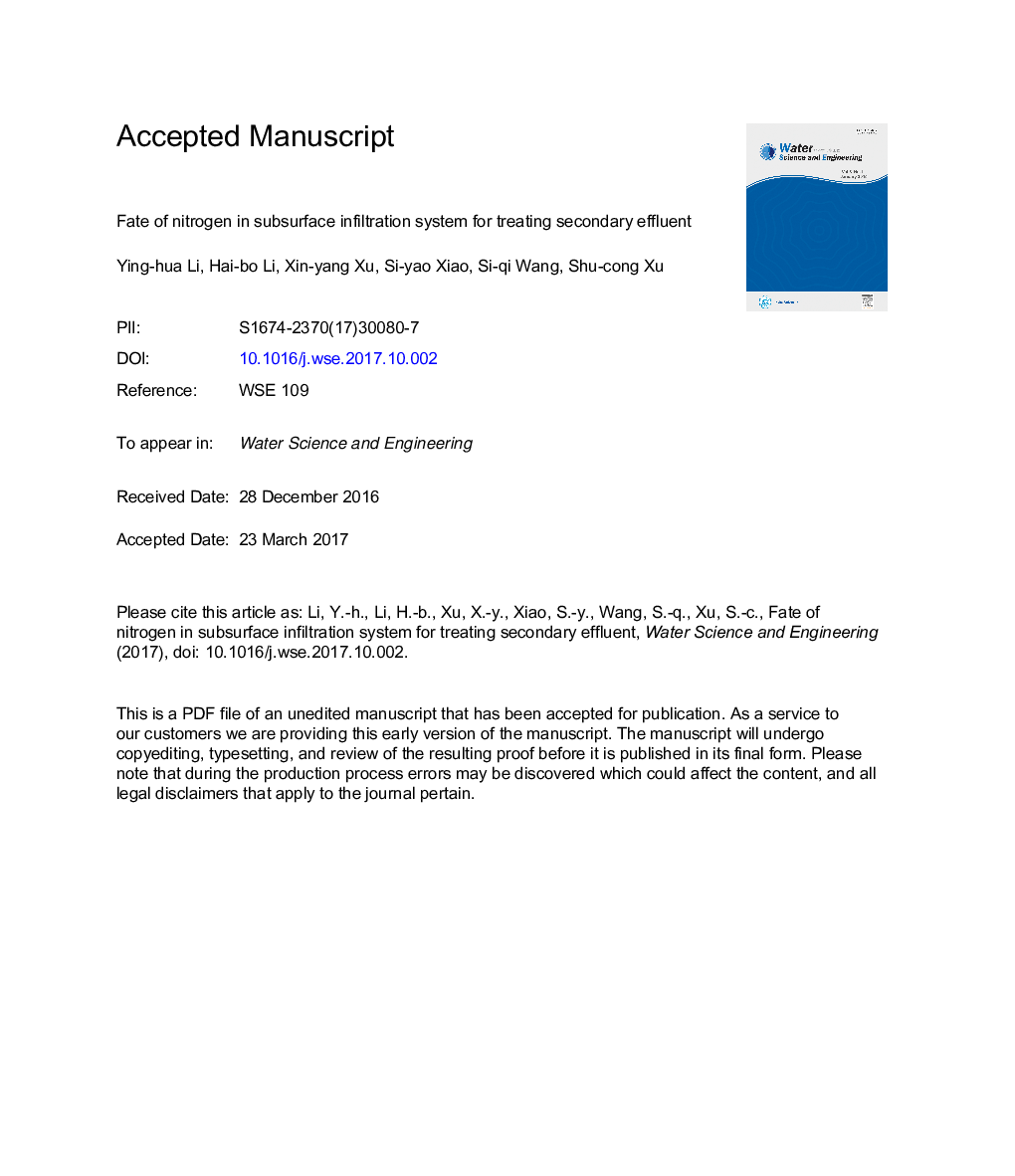| کد مقاله | کد نشریه | سال انتشار | مقاله انگلیسی | نسخه تمام متن |
|---|---|---|---|---|
| 6784614 | 1432335 | 2017 | 11 صفحه PDF | دانلود رایگان |
عنوان انگلیسی مقاله ISI
Fate of nitrogen in subsurface infiltration system for treating secondary effluent
ترجمه فارسی عنوان
سرنوشت نیتروژن در سیستم نفوذ در زیر زمین برای درمان پساب ثانویه
دانلود مقاله + سفارش ترجمه
دانلود مقاله ISI انگلیسی
رایگان برای ایرانیان
کلمات کلیدی
تصفیه فاضلاب، تکنولوژی درمان طبیعی، نفوذ زیرزمینی، نیتروژن، فرایند بیولوژیک،
موضوعات مرتبط
مهندسی و علوم پایه
سایر رشته های مهندسی
مهندسی عمران و سازه
چکیده انگلیسی
The concentration of total nitrogen (TN) is reported to vary between 20 and 35â¯mg/L in domestic wastewater. In raw wastewater, ammonia nitrogen (NH4+-N) is the main nitrogen form, accounting for 70%-82% of the TN concentration. Organic nitrogen, nitrite nitrogen (NO2â-N), and nitrate nitrogen (NO3â-N) are present as well. For years, due to the lack of regulatory limits on nitrogen concentration in surface waters, nitrogen from secondary effluent has posed a significant threat to the health of aquatic ecosystems. Researchers have made substantial efforts to reduce the nitrogen concentration in secondary effluent. As a kind of advanced wastewater treatment technology, the subsurface infiltration (SI) system has been widely used, owing to its advantages, which include low operation cost, easy maintenance, and low energy consumption. This review discusses the fate of various forms of nitrogen in SI treatment, including organic nitrogen, NH4+-N, NO2â-N, and NO3â-N. Major biological processes involved in nitrogen removal and the main factors influencing its transformation are suggested. Finally, it is shown that ammonification followed by nitrification-denitrification plays a major role in nitrogen removal. Further research needs to focus on the emission characteristics of gaseous nitrogen (generated from the nitrification, denitrification, and completely autotrophic nitrogen-removal over nitrite (CANON) processes) with respect to their greenhouse effects.
ناشر
Database: Elsevier - ScienceDirect (ساینس دایرکت)
Journal: Water Science and Engineering - Volume 10, Issue 3, July 2017, Pages 217-224
Journal: Water Science and Engineering - Volume 10, Issue 3, July 2017, Pages 217-224
نویسندگان
Ying-hua Li, Hai-bo Li, Xin-yang Xu, Si-yao Xiao, Si-qi Wang, Shu-cong Xu,
